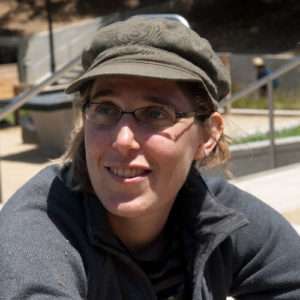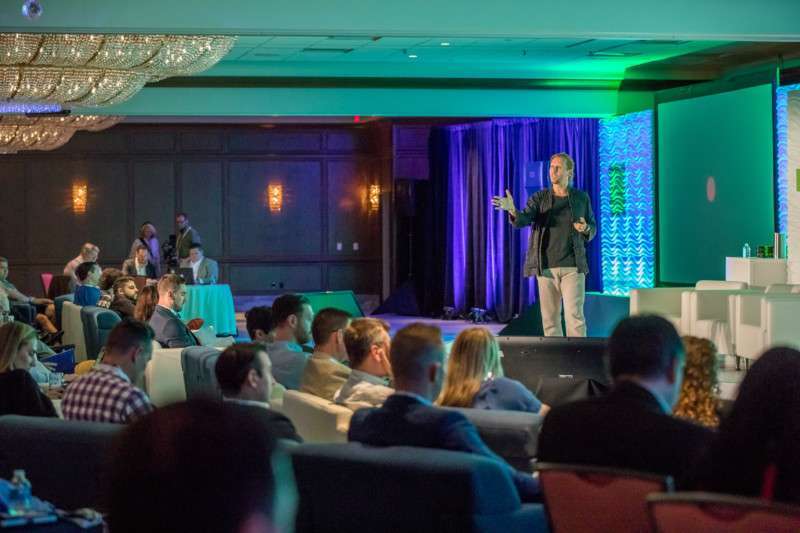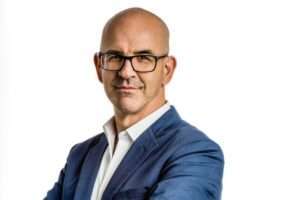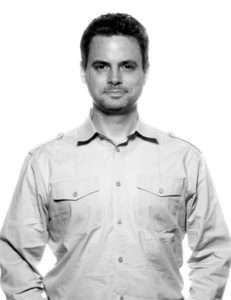TIDE 2018 takeaways
By Judith Rubin
Human-centered design was the theme of the June 5 TIDE conference, preceding the 2018 InfoComm show (June 6-8) in Las Vegas. The TIDE acronym stands for Technology, Innovation, Design, Experience. TIDE and InfoComm take place under the umbrella of AVIXA™, the 5,400-member Audiovisual and Integrated Experience Association which is also co-owner of Integrated Systems Europe. AVIXA is headquartered in Fairfax, VA; CEO is David Labuskes, COO is Heidi Voorhees, Chairman of the Board is Julian Phillips Whitlock.

AVIXA deserves credit for creating TIDE as a state-of-the-art, peer conversation dedicated to under-standing technology as a tool of experience design and storytelling. This dialog enriches the AVIXA community of manufacturers, systems integrators, dealers and distributors, consultants, programmers, IT professionals and media producers.
The conversation at TIDE presents a thought-provoking parallel to another experience design conference we’re familiar with: the TEA SATE conference (Storytelling + Architecture + Technology = Experience), organized by the Themed Entertainment Association. And whether the forum originates in the tech community (AVIXA/TIDE) or the creative community (TEA/SATE), there is a basic tenet that the role of technology must be to help connect people to one another to foster shared experiences.
From there, the question is how – but true to its theme, TIDE did not lose itself in technology for technology’s sake, leaving the details of products and programming to be explored on the InfoComm exhibit floor. It wasn’t a technical how. It was a discussion of benefits rather than features, exploring the kinds of experiences that today’s magical technologies can facilitate, diving topically and relevantly into ethics, empathy, emotion, how the mind works, inclusiveness and accessibility and how human needs and attributes can and should be the ultimate drivers of design in the age of big data and artificial intelligence.

In that context, we learned about human perception from neuroscientist Dr. Beau Lotto of Lab of Misfits Studio. His presentation, “How to Deviate: The Neuroscience of Seeing Differently,” shared wisdom about creativity: “all creativity begins with not knowing; with humility,” data: “information is meaningless; context is everything,” the origins of excellence: “great design begins with a great question (not a great problem),” and risk as an imperative: “your brain needs closure, but we have to go to uncertainty if we’re going to see differently.”
Case study presentations included “Designing the Customer Experience: Nike NYC Headquarters,” with Aaron McArdle of RoomReady and Kevin Potts of Coherent Design, moderated by Margot Douaihy of NewBay Media. The primary goal of the new headquarters is to support Nike retailers. It encompasses some 150,000 square feet and six floors, located close to Madison Square Garden. Unique features include a working basketball court with a full theatrical lighting grid and 13 LED clouds in nonstandard aspect ratios with constantly changing content.

“Designing for Inclusion” was another intriguing case study, about the new, 40,000 LightHouse for the Blind and Visually Impaired in San Francisco. Presenters Scott Blanks, Senior Director of Programs at LightHouse, Sasha Harris-Cronin of BBI Engineering and Shane Myrbeck of Arup, with moderator Kevin Jackson, related an illuminating story of designing a high-end AV system that could be entirely run by blind users. The challenges were transformative, requiring, as Harris-Cronin said, “a fundamental change of process.” As Blanks summarized, “If you build for everyone, it tends to work for everyone.”
All in all, TIDE delivered a provocative mixture of thought leadership and case studies for professional development and information exchange among peers. In this context, experiences in a wide range of settings and applications were touched on, including themed entertainment. Anthony Pannozzo of frog design talked about working with Disney to design the magic band technology; Chad Hutson of Leviathan spoke of digital technologies in museums, theme parks, retail spaces and business environments, and mentioned that his company is working on Super Nintendo World in Osaka.

Presenters spoke with intensity of how to improve the relationship between humans and technology by finding ways to get our noses out of our phones – to take us from distraction to immersion. Stephen Braitsch of Fjord raised compelling examples that show how selectively technology is being applied – shaving a few seconds off a high-end retail transaction, for instance, while a few blocks away people endure long wait times at the DMV or the emergency room.
Much of the conversation dealt with making technology more transparent and at the same time more omnipresent – creating a digital infrastructure, fully integrated into the fabric of life – part and parcel of the environment rather than a device in one’s hand, pocket or purse. Ideally – in the vision communicated by the TIDE presenters – the experiences would be more akin to breathing and less like substance abuse – and the tools and applications would enrich the general quality of life and human interaction as well as delivering entertainment and luxury.

Federico Caselgno of Samsung Design Innovation Center talked about how millennial preferences such as the desire to “bypass the agent” are shaping design. Rana June of Lightwave captures, interprets and applies emotional data not just to inform user experience design, but also as the basis of creative visualization and art. June’s work put us in mind of the work of an earlier pioneer in this field – Donna Cox, whose groundbreaking scientific data visualizations feature in numerous media productions on astronomy and earth science that are screening in giant screen theaters and planetariums today.
Sponsor companies for TIDE included Biamp, Nureva, Samsung, peerless-AV and LG. More program and speaker information can be found at this link.






